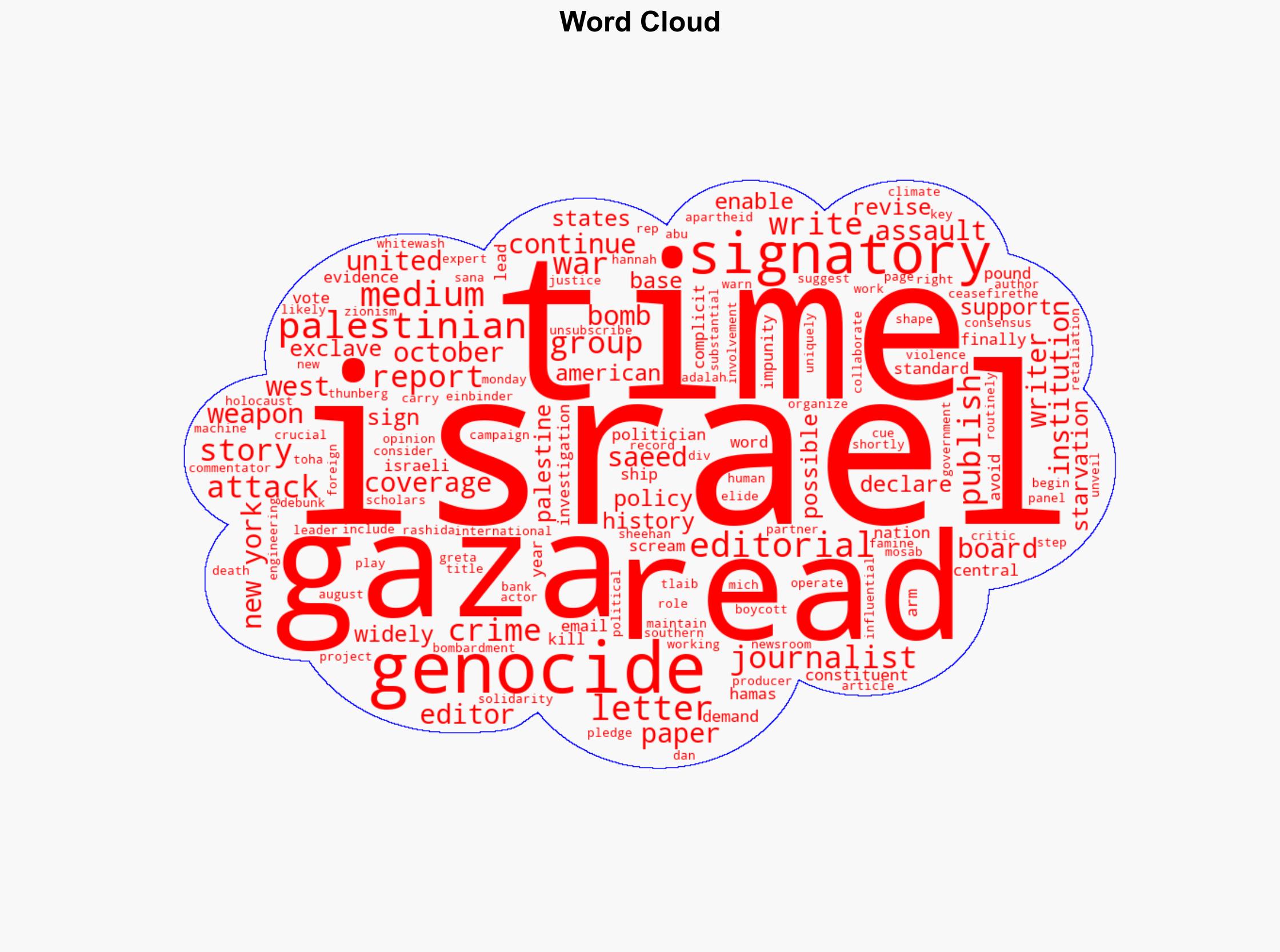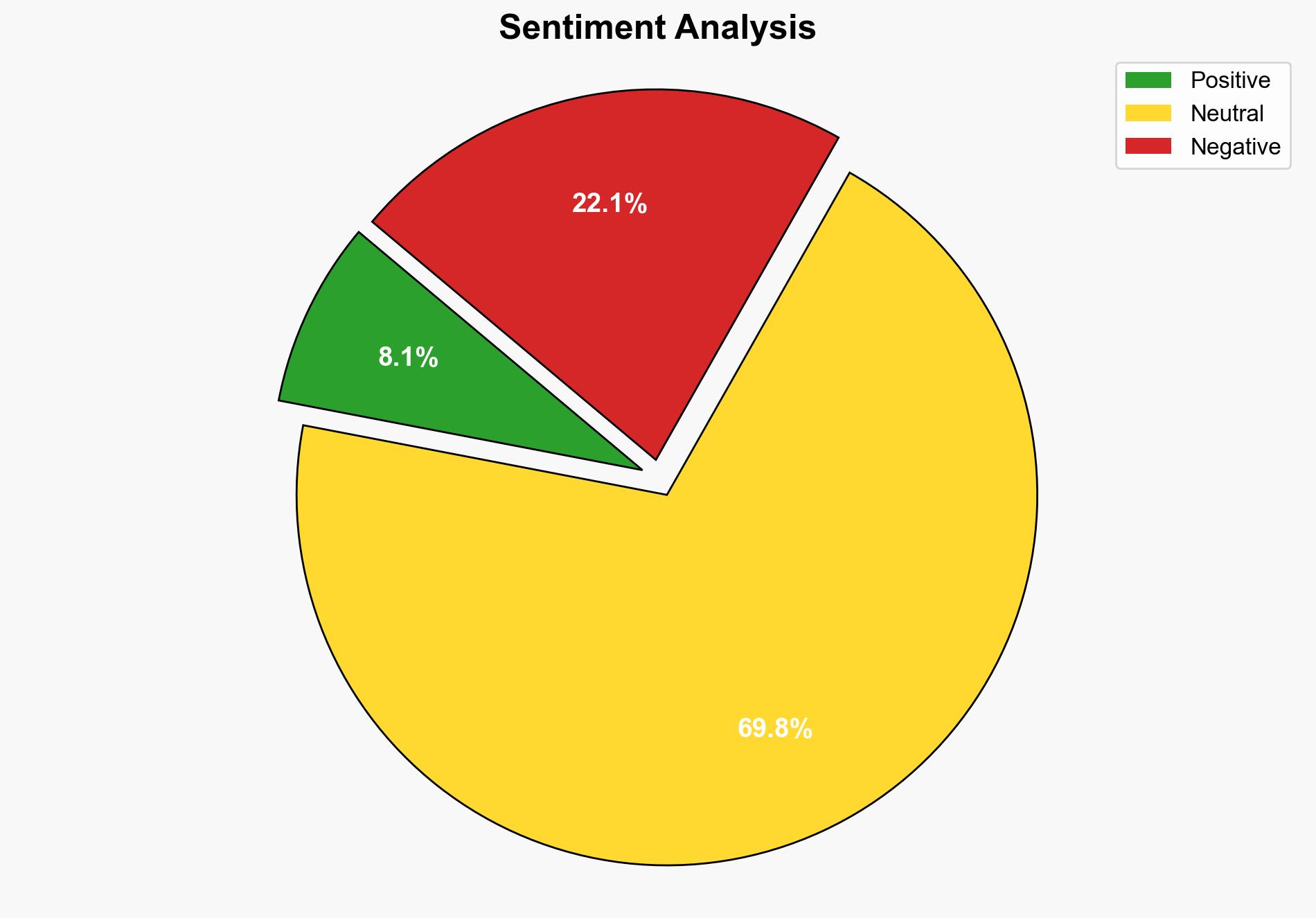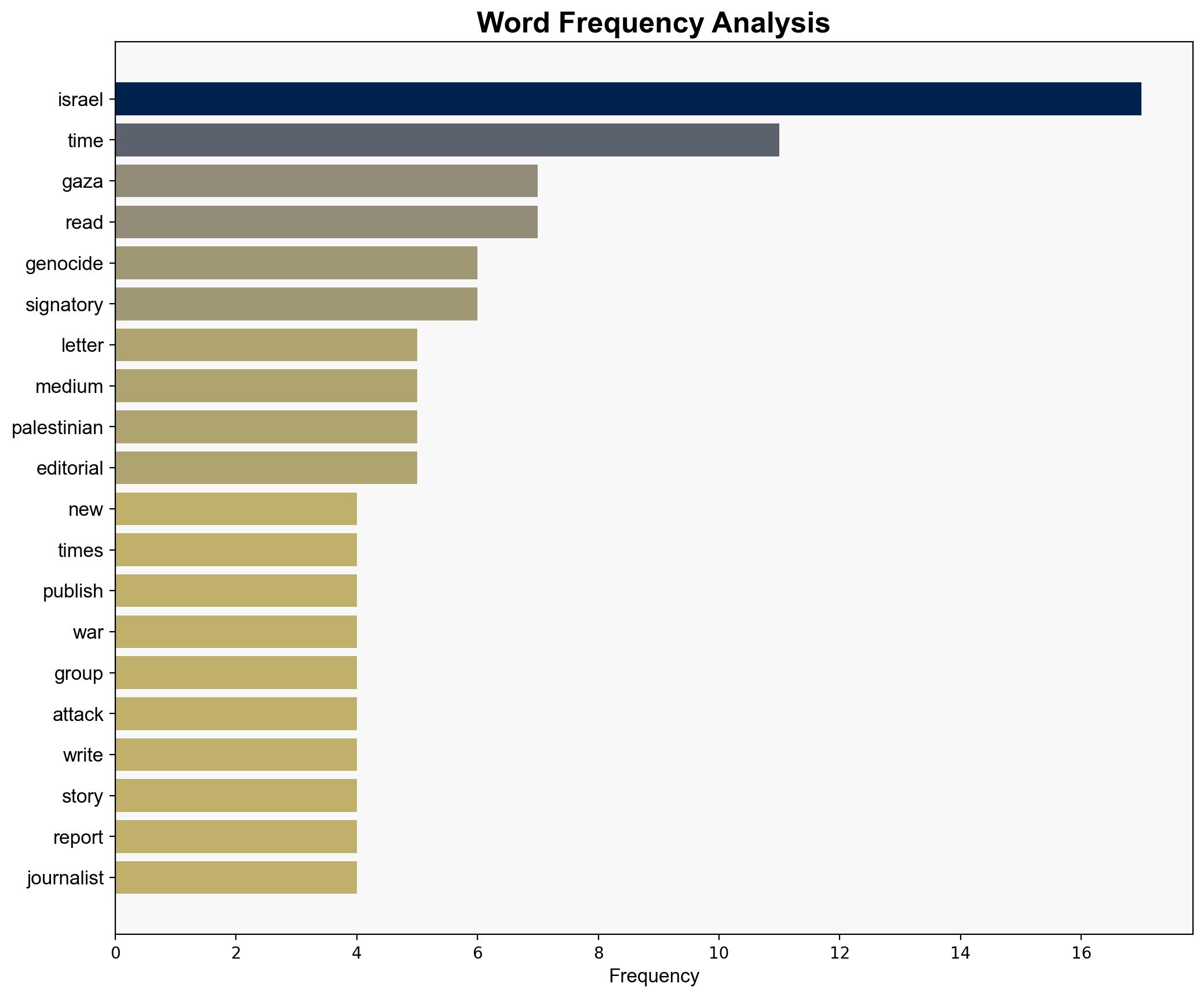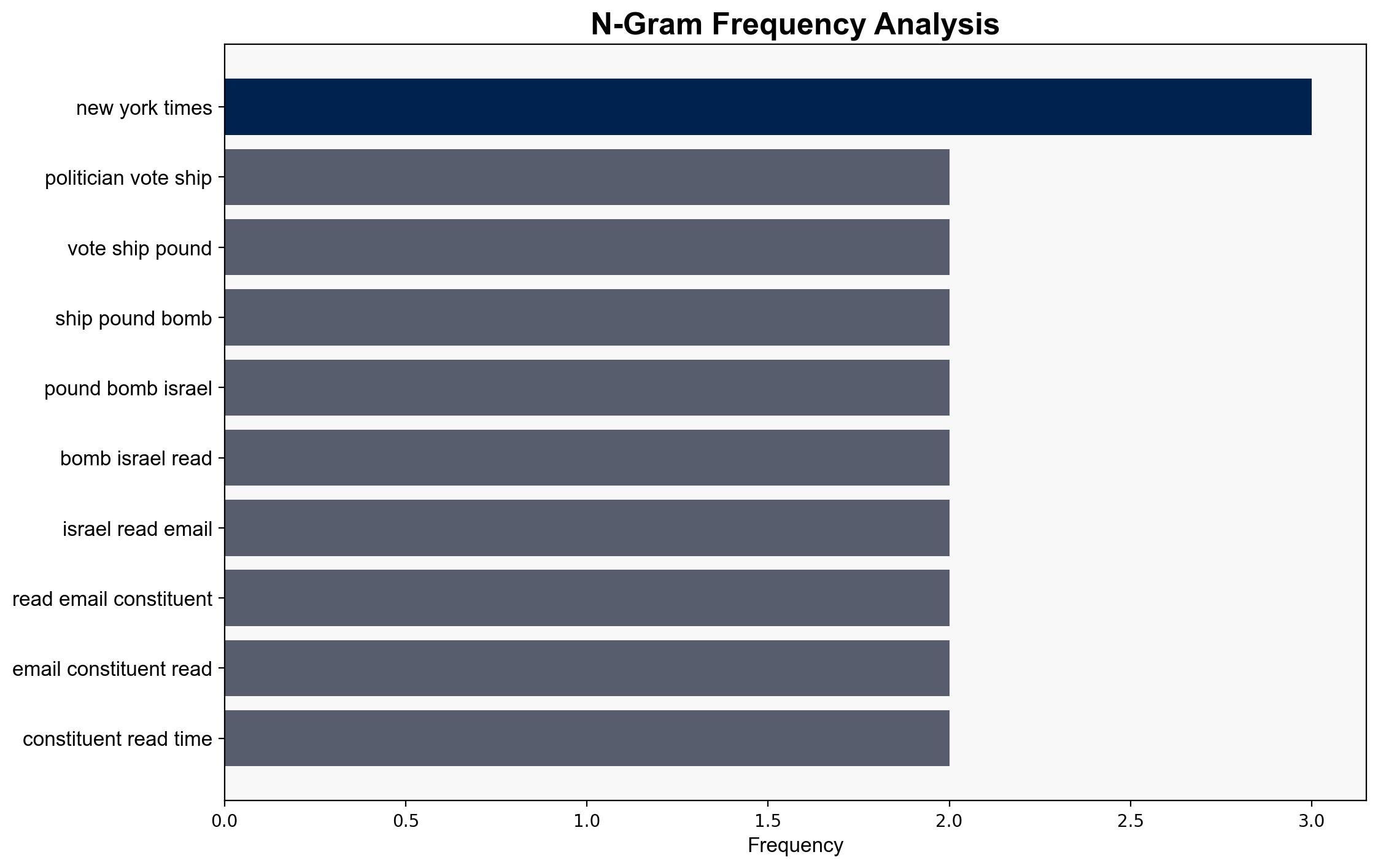300 Writers Boycott NYT Opinion Pages Over ‘Shameful’ Anti-Palestinian Gaza Coverage – Common Dreams
Published on: 2025-10-28
Intelligence Report: 300 Writers Boycott NYT Opinion Pages Over ‘Shameful’ Anti-Palestinian Gaza Coverage – Common Dreams
1. BLUF (Bottom Line Up Front)
The boycott by 300 writers against The New York Times (NYT) highlights significant dissatisfaction with its perceived biased reporting on the Israeli-Palestinian conflict. The most supported hypothesis suggests that the boycott aims to pressure NYT to alter its editorial stance and influence broader media narratives. Confidence level: Moderate. Recommended action: Monitor shifts in media coverage and public sentiment, and assess potential impacts on U.S. foreign policy.
2. Competing Hypotheses
1. **Hypothesis A**: The boycott is primarily a strategic move to pressure NYT into changing its editorial policies, reflecting a broader push for media accountability and balanced reporting on the Israeli-Palestinian conflict.
2. **Hypothesis B**: The boycott is largely symbolic, aiming to raise awareness and solidarity among international audiences, with limited expectation of actual change in NYT’s editorial practices.
Using ACH 2.0, Hypothesis A is better supported due to the organized nature of the boycott, the involvement of high-profile individuals, and specific demands for editorial changes.
3. Key Assumptions and Red Flags
– **Assumptions**: Both hypotheses assume that media narratives significantly influence public opinion and policy decisions. Hypothesis A assumes that NYT is open to external pressure.
– **Red Flags**: Potential bias in the source text, which may overstate the impact of the boycott. Lack of direct response from NYT could indicate either dismissal of the boycott or strategic silence.
4. Implications and Strategic Risks
– **Media Influence**: A shift in NYT’s editorial stance could influence other media outlets, potentially altering public discourse on the conflict.
– **Geopolitical**: Changes in media narratives might impact U.S. foreign policy, particularly if public opinion shifts significantly.
– **Escalation**: If the boycott gains traction, it could lead to increased polarization and further boycotts or protests.
5. Recommendations and Outlook
- Monitor NYT’s editorial changes and public statements for indications of policy shifts.
- Engage with media analysts to assess potential impacts on public opinion and policy.
- Scenario Projections:
- Best: NYT adopts more balanced reporting, leading to broader media accountability.
- Worst: Boycott exacerbates media polarization, reducing trust in journalism.
- Most Likely: Limited immediate change, but increased scrutiny on media practices.
6. Key Individuals and Entities
– Greta Thunberg
– Mosab Abu Toha
– Sana Saeed
– Rashida Tlaib
– Dan Sheehan
– Hannah Einbinder
7. Thematic Tags
national security threats, media influence, geopolitical dynamics, regional focus




